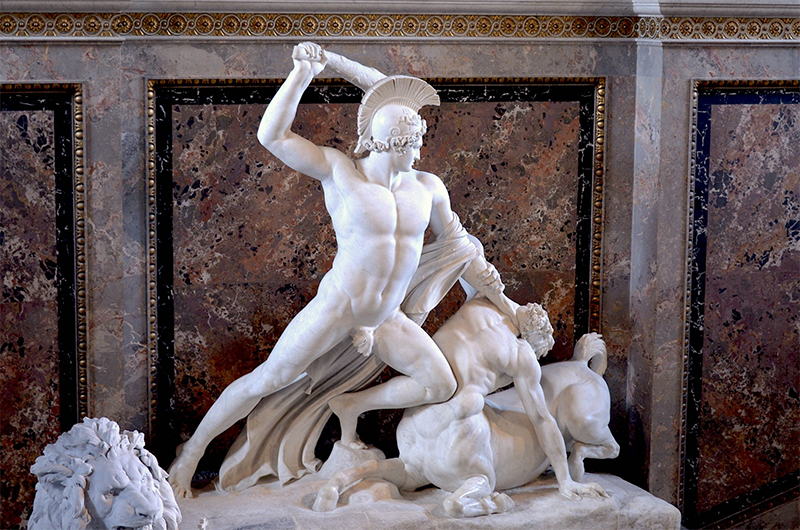FELIPE ROMERO BELTRÁN
REPLICA: ON THE PHOTOGRAPHIC MEANING
Theseus was, according to Greek myth, a legendary king of Athens, son of Aethra and Aegeus. One of the most famous episodes of his life was the release of Athens from the debt it owed to the island of Crete: every year, the Athenians had to pay tribute to King Minos of Crete by taking by ship seven maidens and seven young men who would be given to the Minotaur. Theseus volunteered to be part of the crew and went on the third shipment to defeat the beast.
The ship, which he navigated victoriously, was preserved by the Athenians for centuries, exchanging the worn wood for new whenever necessary[1]. So many times, this ship sailed that the parts that were replaced are incalculable. Thus, this ship became one of the great philosophical questions of its time: Are we facing the original ship knowing that all its parts have been replaced countless times since its construction? and if the old replaced parts were used to build another ship just like it, which of them, if any, would be the original ship of Theseus?[2]

Footnotes
1 In Plutarch, Parallel Lives, Volume I, “Life of Theseus,” XXIII, 1: “The ship of thirty oars in which Theseus sailed with the young men, and returned safe, the Athenians preserved till the age of Demetrius Phalereus, removing the worn wood, and putting in and interweaving new wood; so that this gave matter to the philosophers for the argument which they call augmentative, and which serves for two ends, taking for example this ship, and proving some that it was the same, and others that it was not.”
2 In Georges Didi-Huberman, Fasmas: Ensayos sobre la aparición: “The man who invented the verb “to photograph” lived in intolerable heat in the middle of an escarpment on Mount Sinai. He spoke Greek, at least that is what is believed, since no one could get the slightest hint of conversation out of him. It was as if the oppressive heat of the light, in that part of the mountain – a place called Batos and, supposedly, the precise place where the burning bush appeared – it was as if the suffocating and sacred air had forced this man into a kind of definitive silence. He would often go to sit near a bush, wet the branches with his saliva and all-day long braid them into plaits, while mumbling an incomprehensible phrase. In the ochre aridity of Mount Horeb…. he tried to drown his eyes in the burning solar flux. Imagining that he was becoming an image by just stepping into The Light. The only way, he thought, to see and be seen by something he called “God”. The man who invented the verb “to photograph” wished, then, to transform himself into an image, a diaphanous image. He would have liked never to drink and never to close his eyes. Deep down, he hoped to “abandon his body”, as he himself writes. We do not know the incomprehensible noun that marked the rhythm of his avid vision and breathing. We only know that the verb “to photograph” had appeared there, under his tongue, as if demanding no longer the pleasure of the image and the forms of reality, but the infinite enjoyment of the formless image: that pure tactile intensity that is the light streaming on our surrendered face.”
—
Felipe Romero Beltrán was born in Bogotá, in 1992. He is a Colombian photographer based in Madrid, Spain. Felipe focuses on social issues, dealing with the tension that new narratives introduce in the field of documentary photography. At the same time, he is currently preparing a PhD dissertation on photography at Complutense University of Madrid. His practice, characterized by its interest on social matters, is the result of long-term projects accompanied by extensive research on the subject.
